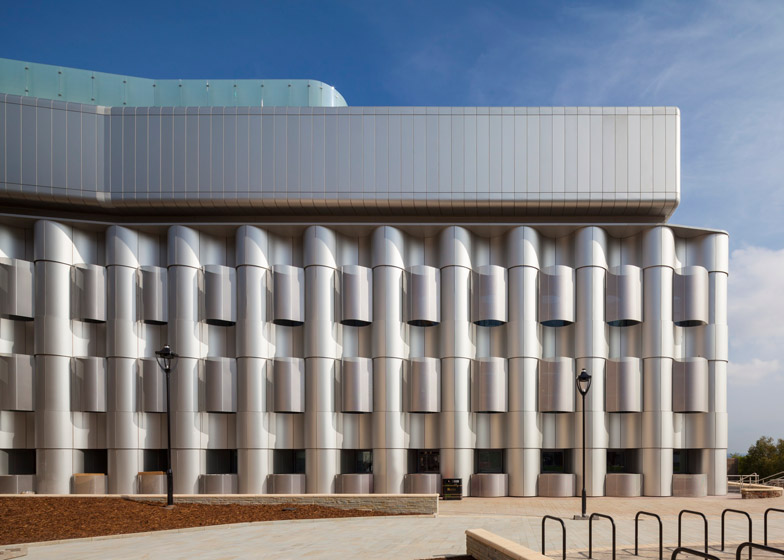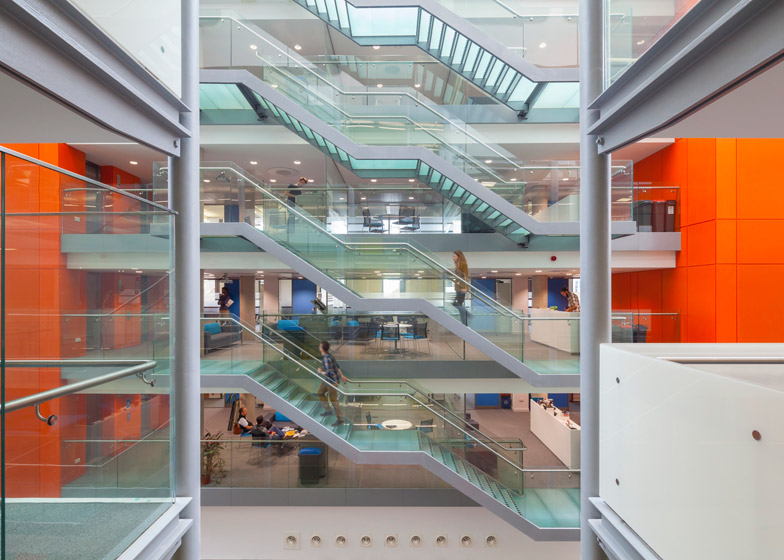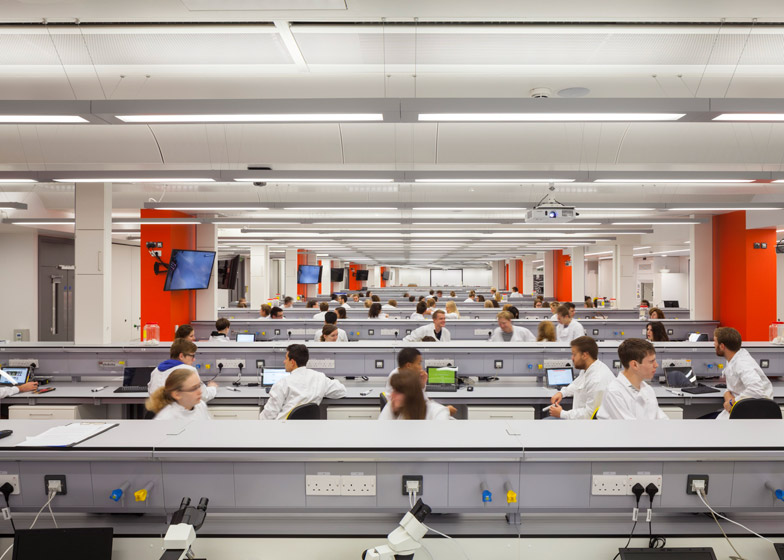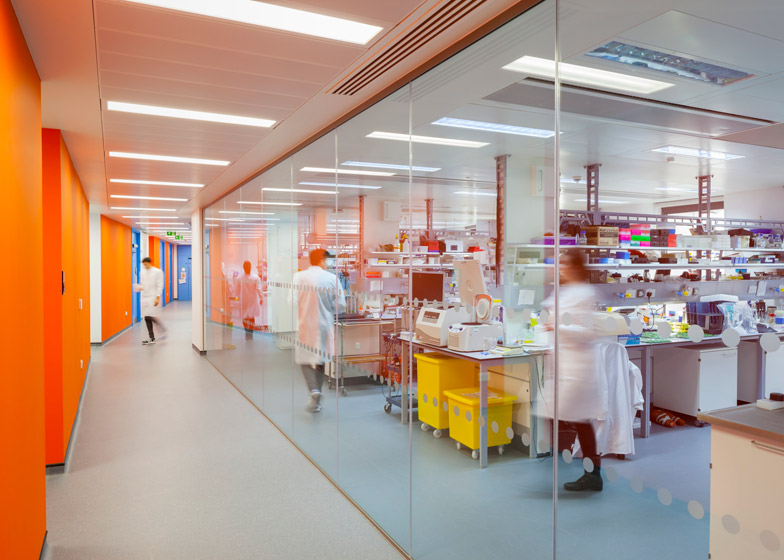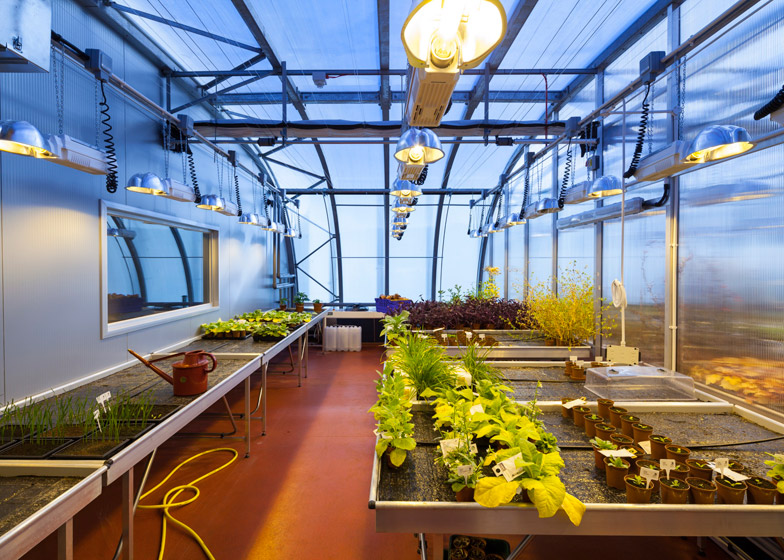Wavy panels of anodised aluminium conceal ventilation channels within the facade of this university science facility in Bristol, England, by British architecture firm Sheppard Robson (+ slideshow).
The Bristol Life Sciences Building was designed by Sheppard Robson to provide new teaching labs, formal and informal learning spaces, a communal atrium and a bio-sciences library for the University of Bristol.
The facility is located on the university's campus in a conservation area and replaces the disused wards of a children's hospital, two blocks of houses and a 1960s building.
In response to the historically sensitive location, the architects developed a proposal that separates the building into two parallel wings distinguished by differing aesthetic treatments.
"The architectural ambition of the project is to create a building that respects the neighbouring listed buildings and surrounding conservation area, whilst also adding a confident piece of contemporary design to Bristol," said a statement from Sheppard Robson.
One wing accommodates offices and seminar rooms that require less space between floors than the laboratories, so the overall height could be reduced.
"The massing of this block is stepped in order to conceal the profile of the building when viewed from the city below," the architects added.
Alternating surfaces of Bath stone and a lighter render enhance the division of this facade into a terraced row of vertical bays that references the area's residential architecture.
The laboratories are housed in a larger block that faces the rest of the campus. Its facade is clad in an wavy surface of natural anodised aluminium.
Ventilation ducts that draw air from the rooftop plant towards the laboratories are arranged along the facade and covered by the bulging metal panels.
The space between the building's two wings is occupied by a full-height atrium. A glass roof helps to bring in plenty of light, creating a welcoming circulation and social area.
An array of meeting spaces incorporated in the atrium provide opportunities for improved interaction between researchers, staff, students and visitors.
Glazed walls create a visual connection between the laboratories, meeting rooms and adjacent circulation spaces.
The otherwise technical material palette of glass and metal is contrasted with brightly coloured surfaces and furniture.
Photography is by Fotohaus.

